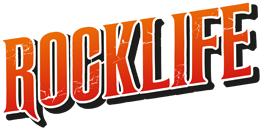In the late 20th century, much of North America changed its legal drinking age (MLDA) as follows: people under the age of 21 who work in the food or beverage industry may be able to purchase alcohol for their work. However, in most cases, they are not allowed to drink it. Section 78 of the Children`s Act – No person shall sell, lend, give, supply, provide or offer liquor to children under 16 years of age unless there is a written order signed by the parent or guardian of the child known to that person. The police have a duty to confiscate any alcoholic beverage in the possession of a child under the age of 16 without the written consent of parents or guardians. [38] Some states are strict regarding underage drinking and may also have special laws to determine blood alcohol concentration (BAC), where anyone under the age of 21 is considered intoxicated. If you are a miner, these values are often low or set to zero. In general, if you`re under 21, it doesn`t take much alcohol to bring your blood alcohol level up to the levels set in many states. Low levels and some severe penalties are set to deter underage consumption. In North America, the legal drinking age and the legal purchasing age range from 18 to 21: along with Oregon, California has the oldest MLDA 21 laws in the country. In 2016, there was an initiative to lower the drinking age to 18, but it didn`t get much support. However, the consumption of alcohol by minors is allowed in the presence of a responsible adult. It was made to help parents teach their children the importance of moderation in alcohol consumption.
As can be seen in the table below, since the repeal of prohibition in 1933, there has been great volatility in the age of alcohol consumption in the states. Shortly after the 21st Amendment was ratified in December, most states set their purchasing age at 21, which was the voting age at the time. Most of these limits remained constant until the early 1970s. From 1969 to 1976, about 30 states lowered their purchasing age, usually to 18. This was largely due to the fact that the voting age was lowered from 21 to 18 with the passage of the 26th Amendment in 1971. Many states began lowering their minimum drinking age, most in 1972 or 1973. [2] [3] [4] Twelve states have maintained their purchasing age at 21 since the repeal of prohibition and have never changed it. Chronology of changes in age of drinking/purchase or laws restricting access to alcohol for minors: Chemically, alcohol is an organic compound formed when grains, vegetables, or fruits are allowed to ferment.
Medically, alcohol is classified as a sedative (as opposed to a stimulant like caffeine or a hallucinogen like psilocybin) with a variety of physiological effects. Most of these effects involve slowing down or obstructing bodily functions. For example, alcohol inhibits bodily motor functions and slows reaction times. The more you drink, the slower and clumsier they become. Similarly, alcohol also hinders the brain`s communication pathways. While one or two drinks can make a person looser and more relaxed, continued consumption leads to symptoms such as slurred speech, cloudy thinking, and poor decision-making. Excessive alcohol consumption can also lead to additional complications such as vomiting, memory loss, drowsiness up to fainting, and in extreme cases, alcohol poisoning. Finally, long-term excessive alcohol consumption can contribute to serious physiological conditions, including (but not limited to) pancreatitis, cardiomyopathy, liver disease, hyperglycemia, cancer, and various neurological disorders. In some religions, it is customary to serve small amounts of wine to parishioners as part of a service or ceremony. It would be illegal for anyone under the age of 21 to participate in these activities, but some states have exceptions to allow believers under the age of 21 to legally participate in the rituals. The most well-known reason for the law behind the legal drinking age is the effect on the brain in teenagers.
As the brain is still maturing, alcohol can have a negative effect on memory and long-term thinking. In addition, it can cause liver failure and cause hormonal imbalance in adolescents due to the constant changes and maturation of hormones during puberty. [3] Youth are also particularly at risk of injury when drinking alcohol,[4] as they may not have the necessary knowledge about low-risk drinking. In fact, public health researchers found that people`s age to drink the first full serving of alcohol was significantly related to knowledge of low-risk alcohol consumption and beverage counting. Knowledge about low-risk alcohol consumption and frequency of beverage counting increased more sharply with age at first drinking in adolescence than at the end of the period. [5] 7. When reporting a medical necessity due to the consumption of alcohol by a minor for another minor: In some states, a minor is not punished for consuming alcohol if it is established that he or she drank alcohol by reporting a medical emergency for another underage drinker. Each state sets its own specific requirements for what is considered legal. 8. In liquor auction rooms with parental consent: In some states, underage drinking is permitted at an alcohol outlet such as a restaurant or bar if the alcohol is provided to the minor by a legal guardian and the minor is in the presence of their legal guardian.
The minimum age to buy alcohol in India is 18 years old in Goa, Himachal Pradesh, Karnataka, Sikkim and Pondicherry. The legal drinking age is 21 in Andhra Pradesh, Arunachal Pradesh, Assam, Chhattisgarh, Jammu and Kashmir, Jharkhand, Kerala, Madhya Pradesh, Maharashtra, Mizoram, Orissa, Rajasthan, Tamil Nadu, Telangana, Tripura, Uttarakhand, Uttar Pradesh, West Bengal, Haryana, Meghalaya, Punjab and Delhi. Alcohol is banned in Bihar, Gujarat, Manipur, Mizoram, Nagaland and Lakshadweep. Several reasons have been given for the laws and regulations underlying the legal drinking age.

